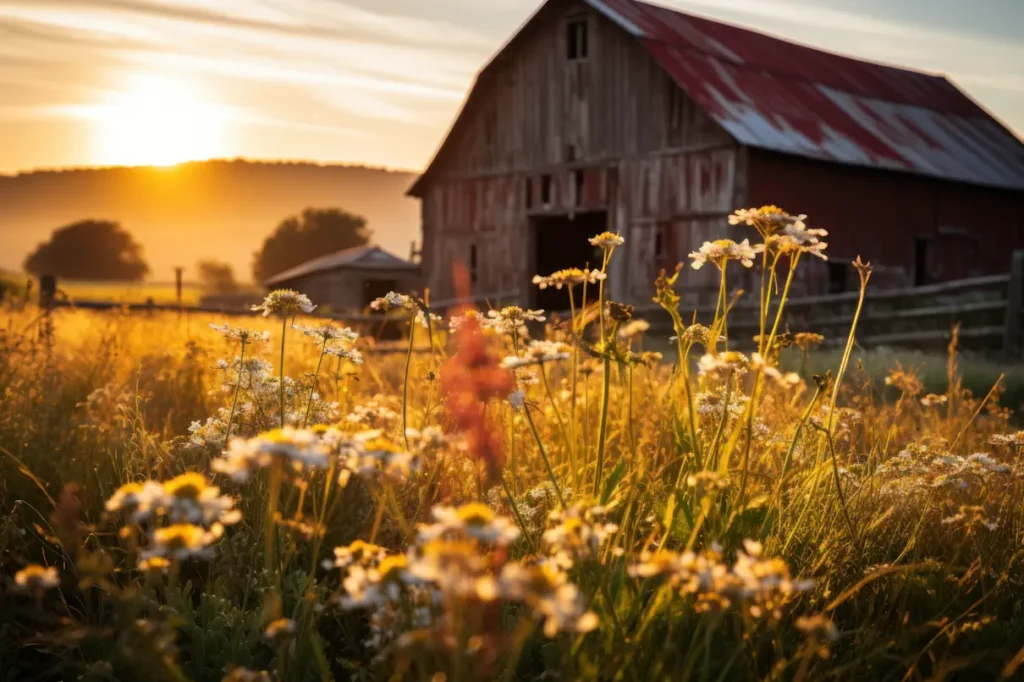Old barns and historic structures are more than just buildings; they are pieces of history, standing as silent witnesses to the past. However, maintaining these structures requires a delicate balance of preservation and modernization. Here’s a guide on how to properly maintain your old barn or historic structure, addressing common threats and offering beneficial DIY treatments.

Understanding Common Threats
- Powder Post Beetles: These tiny insects can cause significant damage to wooden structures. They bore into the wood, leaving behind a powdery residue. Regular inspections and treatments are essential to prevent infestations.
- Carpenter Bees: Unlike termites, carpenter bees do not eat wood but bore into it to create nests. This can weaken the structural integrity over time. Sealing cracks and applying insecticides can help manage these pests.
- Weather: Exposure to the elements can cause wear and tear on any structure. Wind, rain, snow, and extreme temperatures can lead to structural damage. Regular maintenance and weatherproofing are crucial.
- Water Damage: Water is one of the most destructive forces for wooden structures. It can lead to rot, mold, and mildew. Ensuring proper drainage and repairing leaks promptly can mitigate water damage.
- UV Exposure: Prolonged exposure to sunlight can cause wood to fade and weaken. Using UV-resistant finishes can help protect the wood from the sun’s harmful rays.
- Fire Safety: Fire is a significant risk for old wooden structures. Installing smoke detectors, keeping fire extinguishers handy, and clearing the area around the barn of dry vegetation can help prevent fires. Regularly check electrical wiring and avoid storing flammable materials inside the barn.
Beneficial DIY Treatments
- Bora-Care: This is a popular treatment for protecting wood from insects and decay. It penetrates deep into the wood, providing long-lasting protection against termites, beetles, and fungi. Applying Bora-Care is relatively simple and can be done with a brush or sprayer.
- Australian Timber Oil: This oil is excellent for preserving and enhancing the natural beauty of wood. It provides a rich finish while protecting the wood from moisture and UV damage. Applying Australian Timber Oil can be a rewarding DIY project, giving your barn a fresh, vibrant look.
Maintenance Tips
- Regular Inspections: Conducting regular inspections is the first step in maintaining an old barn or historic structure. Look for signs of damage, such as cracks, leaks, or insect infestations. Early detection can prevent minor issues from becoming major problems.
- Structural Repairs: Address any structural issues promptly. This may involve reinforcing beams, replacing damaged wood, or repairing the foundation. Ensuring the structural integrity of the building is paramount.
- Weatherproofing: Apply weatherproofing treatments to protect the structure from the elements. This includes sealing cracks, applying waterproof coatings, and ensuring proper drainage around the building.
- Painting and Staining: Regularly painting or staining the wood can protect it from moisture and UV damage. Choose high-quality, UV-resistant paints and stains for the best results.
- Pest Control: Implement a pest control plan to keep insects at bay. This may involve applying insecticides, sealing entry points, and using natural deterrents.
- Fire Safety Measures: Install smoke detectors and keep fire extinguishers in easily accessible locations. Clear the area around the barn of dry vegetation and regularly check electrical wiring to prevent fire hazards. Avoid storing flammable materials inside the barn.
Resources for Further Information
- National Park Service Preservation Briefs: Offers a wealth of information on preserving historic buildings.
- University of Vermont Historic Preservation Program: Provides resources and guidelines for maintaining historic barns.
- USDA Forest Service: Offers information on wood preservation and pest management.
Maintaining an old barn or historic structure is a labor of love. By understanding the common threats and implementing effective DIY treatments, you can ensure that these beautiful buildings continue to stand the test of time. Whether you’re using Bora-Care to protect against insects or Australian Timber Oil to enhance the wood’s natural beauty, your efforts will help preserve a piece of history for future generations.
Shaun A. Cinson, the innovative founder and owner of Broadleaf Timber & Masonry Reclaiming, LLC, also known as Broadleaf Cabins, has been a driving force in preserving North Carolina’s historical tobacco barns. His dedication to this cause has been highlighted in Tobacco Farm Quarterly, which praised his meticulous restoration techniques and commitment to sustainability. Styles Blueprint featured Shaun’s ability to blend traditional craftsmanship with modern design, creating unique and functional spaces. The Greensboro News & Record lauded his efforts in revitalizing the local heritage, turning forgotten barns into beautiful log cabins that honor the region’s rich history. Additionally, Broadleaf was recognized as a go-to restoration company for barns in Our State Magazine and featured in a Fox 8 “Made in North Carolina” presentation. Shaun and his company have also been spotlighted in the Caswell County newspaper, The Messenger. Shaun’s passion and expertise have positioned Broadleaf as a leader in the field, celebrating the past while building for the future.


Comments